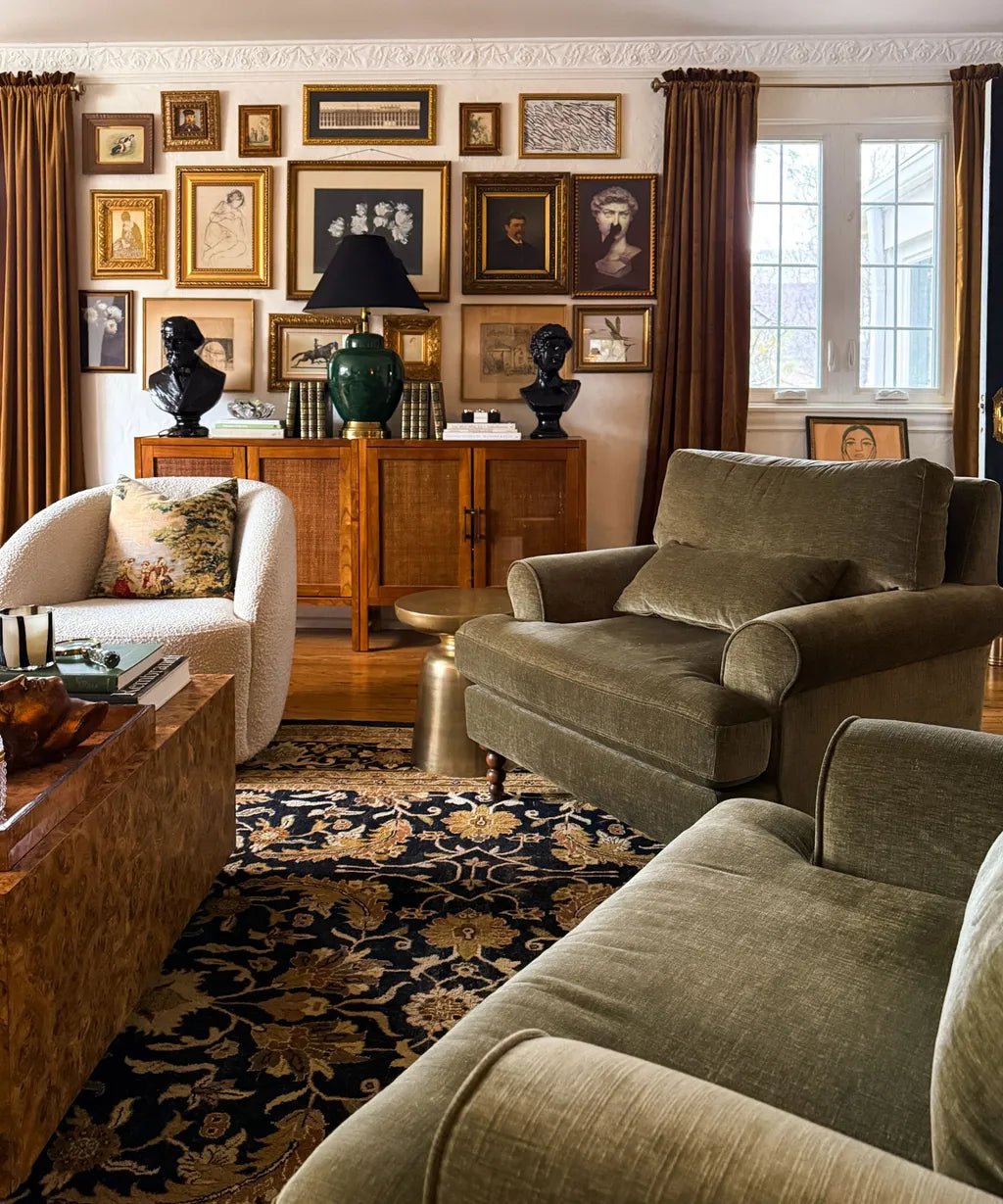
Why We’re Obsessed with Antiques: The Science Behind It
If you've ever run your hand over the carved edge of a century-old sideboard, or paused to admire the hand-painted glaze on a vintage vase, you know: antiques hit different. But why? What makes us swoon for old things—especially in a world obsessed with the new, the fast, the disposable?
It turns out, our love of antiques isn’t just about aesthetic or trend. It’s psychological, biological, even philosophical. From the wiring of our brains to the erosion of modern craftsmanship, here’s a deep dive into the science behind why people are so drawn to antiques—and why we’ll always be chasing that magic.

(Image credit: Vanessa Chaverri-Gratz )
1. Our Brains Are Wired for Story and Memory
At the core of our love for antiques is something called associative memory—our brain’s ability to link objects with meaning, emotion, and narrative. When we see a vintage teacup, we don’t just see porcelain—we subconsciously cue up a movie reel of imagined stories: Who held this? Where did it live? Was it part of someone’s morning ritual for fifty years?
This phenomenon is rooted in episodic memory, the type of memory associated with time and place. Even if we never owned the object, antiques awaken a sense of lived experience—sometimes real, often imagined. And this makes us feel grounded, connected, and yes, safe. There’s emotional comfort in continuity.

(Image credit: Studio Alexandra)
2. Authenticity: Place Matters
One of the most underrated reasons we’re drawn to antiques is something sociologists call "place authenticity." It’s the unique essence of a location—an environment that feels alive, specific, and connected to its past.
In a world where so much design is placeless—think mass-market furniture that looks the same in Toronto as it does in Tucson—antiques anchor us. A weathered farmhouse table tells you exactly where it came from: a region, an era, a way of life. It brings soul to a space.
Antiques inject a room with identity. They say, this space has been lived in, loved, and curated over time. That authenticity is increasingly rare—and increasingly valuable.

image credit: Pinterest
3. Sensory Gratification and Patina Addiction
There’s a physiological reason you like the way old things feel: your brain’s reward center lights up when it processes texture, weight, and tactility. Antiques satisfy all three. The heavy thud of a brass candlestick. The soft wear of a velvet seat cushion. The uneven, imperfect sheen of a hand-thrown pot.
That irregularity and aging is called patina, and it turns out we’re biologically inclined to find it beautiful. It’s like a visual whisper of time passing. This appreciation for aging is a marked contrast to our culture’s obsession with "new"—but it’s rooted in something much deeper: reverence for resilience.
image credit: Ethan Harrington
4. Modern Quality? Practically Nonexistent.
Let’s be honest: you’re not imagining it. Most things made today simply aren’t built to last. Fast furniture? Held together by glue and hope. Textiles? Full of synthetics that start pilling after one wash. Mass-produced lighting? Don’t look too closely.
Antiques, by contrast, were created during a time when craftsmanship mattered. Not because it was trendy, but because it was necessary. If a cabinet was going to last 100 years, it had to be made from solid wood, with joinery that held.
We respond to that quality on a visceral level. Our brains—and our bodies—can feel the difference. It’s not just a look. It’s substance. And in a disposable world, that’s radical.
Image credit: Aimée Mazzenga
5. Sustainability and the Subconscious Ethics of Buying Old
We might not say it out loud, but buying antiques feels right. And that’s because, deep down, we know the environmental cost of producing new goods. Every vintage item saved from a landfill is one less cheaply made, resource-draining product in the world.
Science backs this up too. Studies on “ethical consumption” show that people feel a greater sense of satisfaction when their purchases align with their values—even if they didn’t consciously set out to shop sustainably. The result? A dopamine hit with no buyer’s remorse.
Image credit: Rosanna Bossom / Astrid Templier
6. Uniqueness Is the New Luxury
Last but not least: humans crave uniqueness. We like to think we’re special, and that our homes reflect that. Antiques allow us to escape the beige blur of mass-produced sameness and inject real personality into our surroundings.
Each vintage item comes with quirks, marks, and mystery. No one else has the same lamp, the same rug, the same set of smoky blue depression glass. And in a culture that increasingly values individuality and expression, that matters. A lot.
Final Thoughts: It’s Not Just Stuff
Loving antiques isn’t about hoarding old things. It’s about connection—to the past, to place, to craftsmanship, to sustainability, and to self. It’s an instinctive rebellion against the disposable and the bland.
In a world moving faster every day, antiques invite us to slow down and feel. And that? That’s timeless.
-Juliette



